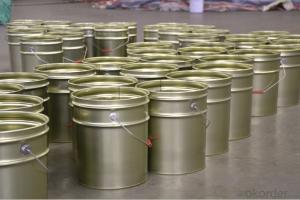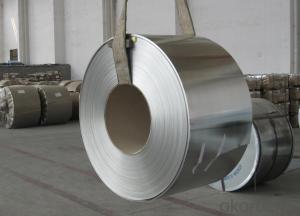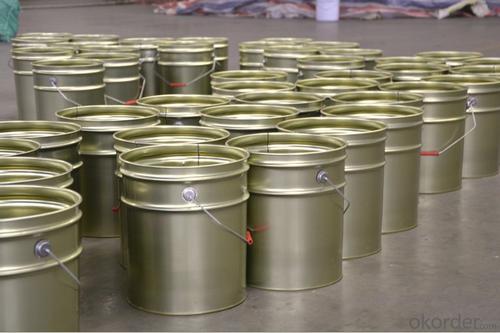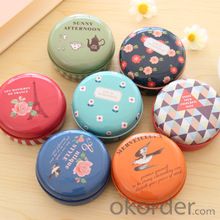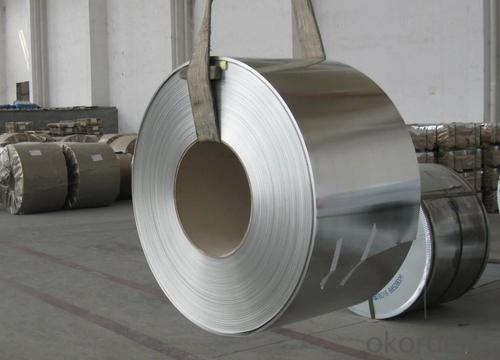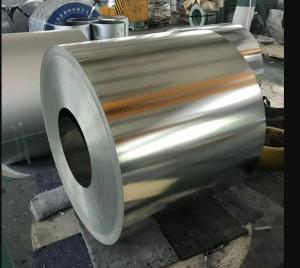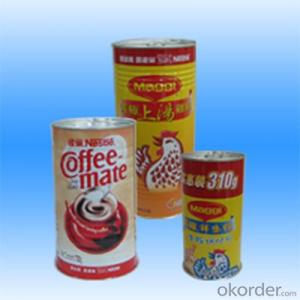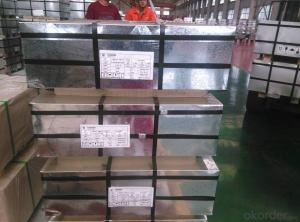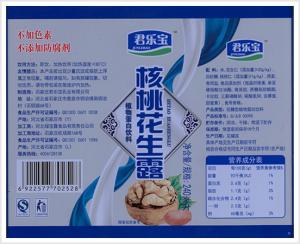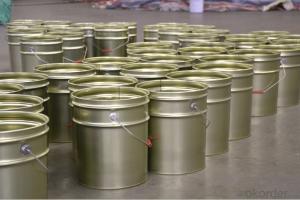Tinplate for Canned Fish Cans, JIS G3303 Standard
- Loading Port:
- Tianjin
- Payment Terms:
- TT OR LC
- Min Order Qty:
- 20 m.t.
- Supply Capability:
- 50000 m.t./month
OKorder Service Pledge
OKorder Financial Service
You Might Also Like
Specification
1.Tinplate production Process
cold rolling mill---degreasing production line---tension leveler---batch annealing furnaces/continuous annealing line---tin coating line---cutting line---stock area
2. Specification
standard: GB/T2520, JIS G3303, DIN EN10202
Material: MR /SPCC
Thickness available: 0.16-0.50MM
Width available: 600~1050MM
Temper grade: T1 – DR8
Tin coating: ordinary 2.8g/2.8g, 5.6g/5.6g and others
Package: sea worthy export package.
Applications: Tin can for chemicals & paint cans, industrial cans, food cans
3.our production equipments

4. Our exporting area;
now our tinplate has been sold to more than 50 countries, including Europe countries, Gulf Area, South American, South Afric etc.
5. FAQ
a. what's the annual output?
about 400,000~500,000 tons per year.
b. what's your advantage than other supplier?
we have overseas warehouse all over the world, like Saudi Arabia, Oman, UAE, Kuwait, Russia, South Africa etc.
c. how long is the delivery time?
about 45~55 days for SPCC, while 60~70 days for MR material
d. how to control the quality during production process?
inside our workshop, we have MES syestem. It will show the status of each production step.
- Q: How does tinplate perform in terms of tamper-evident features?
- Tinplate performs well in terms of tamper-evident features. It is a durable material that can be easily sealed to prevent tampering. The metal construction of tinplate makes it difficult to manipulate or break without leaving visible signs of tampering, making it an excellent choice for packaging goods that require tamper-evident features.
- Q: Is tinplate magnetic?
- Yes, tinplate is magnetic.
- Q: What are the welding methods used for tinplate?
- The welding methods commonly used for tinplate are spot welding, seam welding, and resistance welding. These methods ensure a strong and durable bond between tinplate sheets, making them suitable for various applications such as food cans and packaging materials.
- Q: What are the different types of tinplate closures available?
- Some of the different types of tinplate closures available include twist-off caps, lug caps, crown caps, and press-on caps.
- Q: What is the difference between tinplate and tin-free steel?
- Tinplate is a steel sheet coated with a thin layer of tin, providing corrosion resistance and a shiny appearance, while tin-free steel refers to steel that is not coated with tin and usually relies on alternative coatings or treatments to prevent corrosion.
- Q: What are the main innovations in tinplate production and use?
- There have been several key innovations in tinplate production and use. One significant advancement is the development of continuous annealing technology, which allows for more precise control over the tempering process, resulting in tinplates with improved strength and formability. Additionally, the introduction of advanced coating techniques, such as electrolytic deposition and hot dip coating, has enhanced the corrosion resistance of tinplates, making them ideal for packaging food and beverages. Moreover, the use of tin-free steel (TFS) has gained popularity as an alternative to traditional tinplates, offering cost-effectiveness and environmental advantages. Overall, these innovations have revolutionized tinplate production, providing improved quality, versatility, and sustainability in various industries.
- Q: Can tinplate be used for outdoor applications?
- Yes, tinplate can be used for outdoor applications. Tinplate is a popular material for outdoor use due to its corrosion resistance and durability. It is commonly used in outdoor products such as cans, containers, and packaging for various purposes.
- Q: What are the advantages of using tinplate for shipping containers?
- There are several advantages of using tinplate for shipping containers. Firstly, tinplate is highly resistant to corrosion, which ensures the longevity and durability of the containers, even in harsh marine environments. Secondly, tinplate offers excellent strength-to-weight ratio, making it a lightweight yet sturdy option for shipping containers. Additionally, tinplate is easy to form and shape, allowing for efficient manufacturing processes. Lastly, tinplate provides an effective barrier against moisture and oxygen, protecting the goods inside from damage during transportation.
- Q: What is the purpose of tinplate coating?
- The purpose of tinplate coating is to provide a protective layer of tin on steel or iron surfaces, which helps prevent corrosion and enhance the appearance of the metal.
- Q: What are the benefits of using tinplate for roofing?
- Tinplate offers several advantages for roofing, including its durability, resistance to corrosion, ease of installation, and aesthetic appeal. It is a long-lasting material that can withstand harsh weather conditions and is less prone to damage from elements like hail or wind. Additionally, tinplate is highly resistant to rust and can maintain its structural integrity over time. Its lightweight nature makes it easier to handle and install, reducing labor and transportation costs. Lastly, tinplate roofing can enhance the overall appearance of a building, as it can be painted or coated to match various architectural styles.
Send your message to us
Tinplate for Canned Fish Cans, JIS G3303 Standard
- Loading Port:
- Tianjin
- Payment Terms:
- TT OR LC
- Min Order Qty:
- 20 m.t.
- Supply Capability:
- 50000 m.t./month
OKorder Service Pledge
OKorder Financial Service
Similar products
Hot products
Hot Searches
Related keywords
